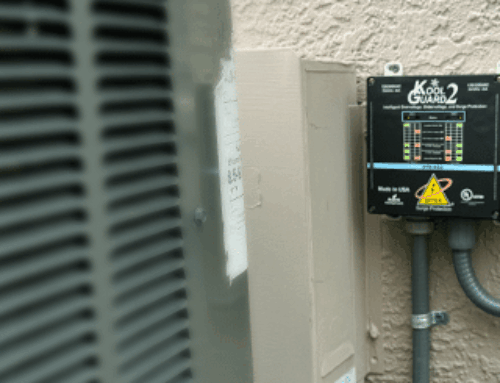In 2023, the committees of the National Fire Protection Association (NFPA) published their most recent updates to the NFPA 70, better known as the National Electrical Code or NEC. Updated every three years, the NEC is the benchmark for safe electrical design, installation, and inspection to protect people and property from electrical hazards.
New requirements specifically relating to surge protection emerged in both the 2020 and 2023 NEC iterations. And while NEC adoption by state varies, the consequences of failing to comply with NEC codes can be costly, endangering both people and property and resulting in expensive fees/repairs. Therefore, it is critical that all stakeholders, from electricians to electrical distributors and homeowners understand the latest NEC requirements for surge protection.
Understanding NEC Requirements for Surge Protection
The first mention of surge protection in the NEC was in 2002. At this time, Section 285 was introduced to address proper installation of hardwired transient Voltage Surge Suppressors (TVSS) or Surge Protective Devices (SPDs). Article 285 acted as a best practice guide, providing general definitions, general installation guidelines, and more. It wasn’t until the 2020 NEC that surge protection became a mandatory requirement.
Article 230.67 introduced in the 2020 NEC reads:
230.67 (A) Surge-Protective Device. All services supplying dwelling units shall be provided with a surge-protective device (SPD).
(B) Location. The SPD shall be an integral part of the service equipment or shall be located immediately adjacent thereto. Exception: The SPD shall not be required to be located in the service equipment as required in (B) if located at each next level distribution equipment downstream toward the load
(C) Type. The SPD shall be a Type 1 or Type 2 SPD
(D) Replacement. Where service equipment is replaced, all of the requirements of this section shall apply. N2023 NEC Requirements for Surge Protection
Understanding NEC 2023 Requirements for Surge Protection
In NEC 2023, the code language of Section 230.67(A) was updated to further define “dwelling units”, now reading:
230.67(A) Surge-Protective Device. All services supplying the following occupancies shall be provided with a surge-protective device (SPD):
(1) Dwelling units
(2) Dormitory units
(3) Guest rooms and guest suites of hotels and motels
(4) Areas of nursing homes and limited-care facilities used exclusively as patient sleeping rooms
Similar code language was added in Section 215.15 for feeders, and Section 225.42 which covers outside branch circuits and feeders. NEC 2023 also introduced Section 409.70, which requires the placement of an SPD to be internal or immediately adjacent to control panels that support personnel protection.
Understanding SPD Types to Satisfy NEC Requirements
Article 230.67(C) of NEC 2020/2023 specifies two types of SPDs and recommends the use of at least one of them for whole house protection. Type 1 SPDs are installed before the main device in the load center, while Type 2 SPDs are positioned on the load side. There is another type of SPD that is commonly in use called Type 3 SPDs; these are also installed on the load side, but closer to actual equipment, such as surge protected power strips and plug-ins. Type 3 SPDs are currently not required by NEC 2023, but as part of current best practices, can still help protect sensitive electronic equipment with an additional layer of protection.
Understanding the Imperative
The new requirements outlined in NEC 2023 will have big implications for the electrical industry. For electricians and installers, compliance with these regulations may not just be a legal requirement, but a moral one. Ensuring the safety of the occupants and the protection of property is paramount to building customer confidence and trust. For electrical distributors, offering compliant surge protection solutions is an opportunity to meet the growing market demand driven by these new NEC requirements.
Homeowners, or residential ‘dwellers’, also play a crucial role in NEC 2023 compliance and should be aware of these requirements. It is important to work with a reputable installer who adheres to all NEC requirements, regardless of the state’s current adoption status. Failure to do so could result in damage requiring expensive repairs or complete loss of property.
Understanding Surge Protection Providers
Surge protection manufacturers are not all built the same. Look for an experienced and proven partner that will ensure you receive the knowledge, tools, and confidence to effectively offer the best surge protection solutions to your customers. DITEK Surge Protection is a family business that has led the surge protection industry for over 30 years with products manufactured at their factory in Largo, FL USA.
To learn more about NEC surge protection requirements and how your customers and your business can benefit from DITEK surge protection solutions, please visit https://www.diteksurgeprotection.com/solutions/the-electrical-suppliers-guide-to-surge-protection or contact us for more information.





